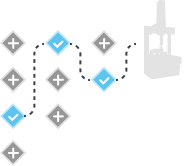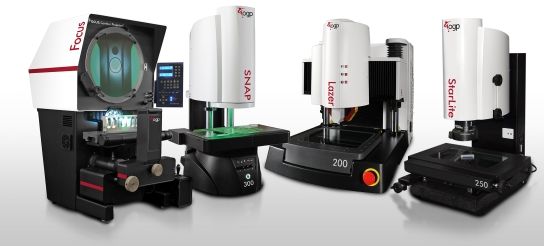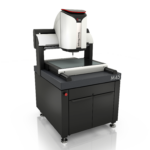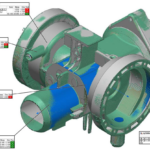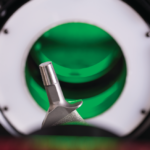Optical comparators have continued to remain a popular and versatile solution for two-dimensional, non-contact shop floor measurement – for nearly one hundred years. Modern advances in materials, optics, electronics, and software have transformed optical comparators into fully automatic digital measuring systems capable of making fast, high-accuracy measurements on the shop floor.
When it comes to investing in optical comparators, many options are available. The following is a quick guide on how to choose the right machine.
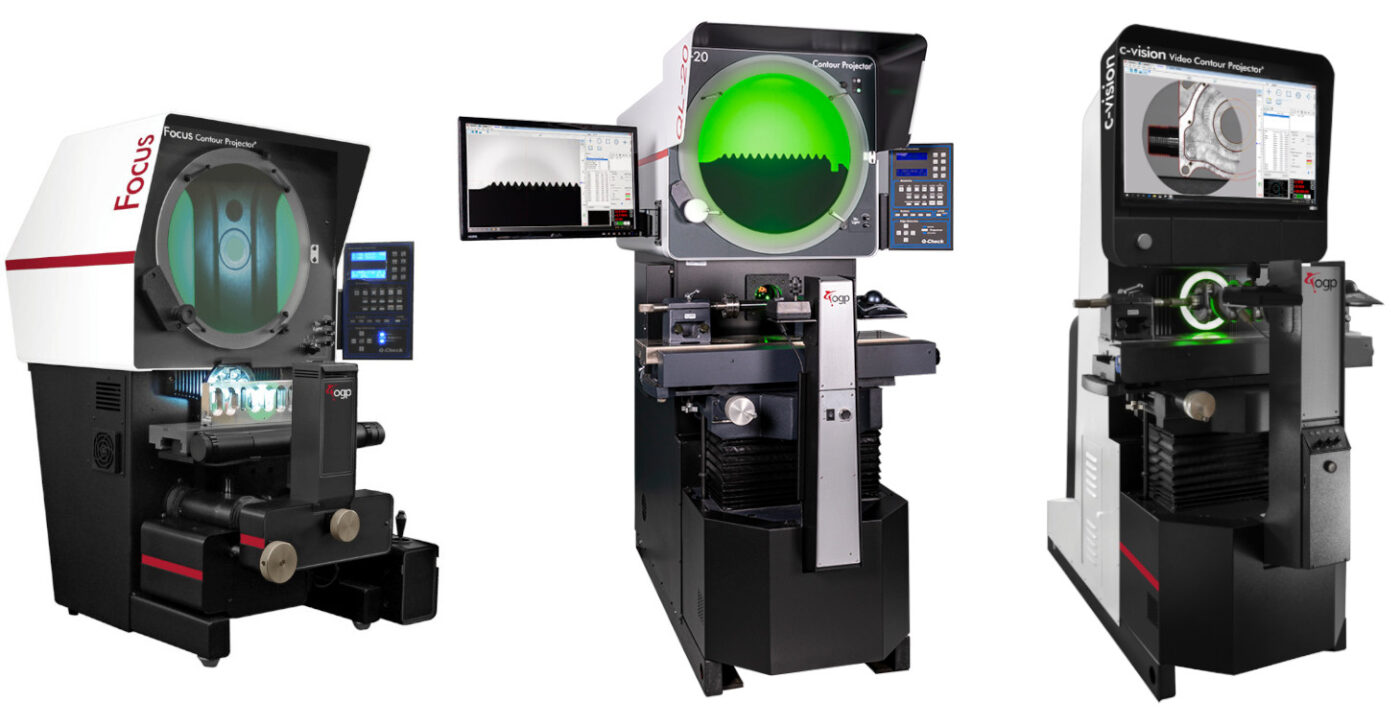
What are Optical Comparators?
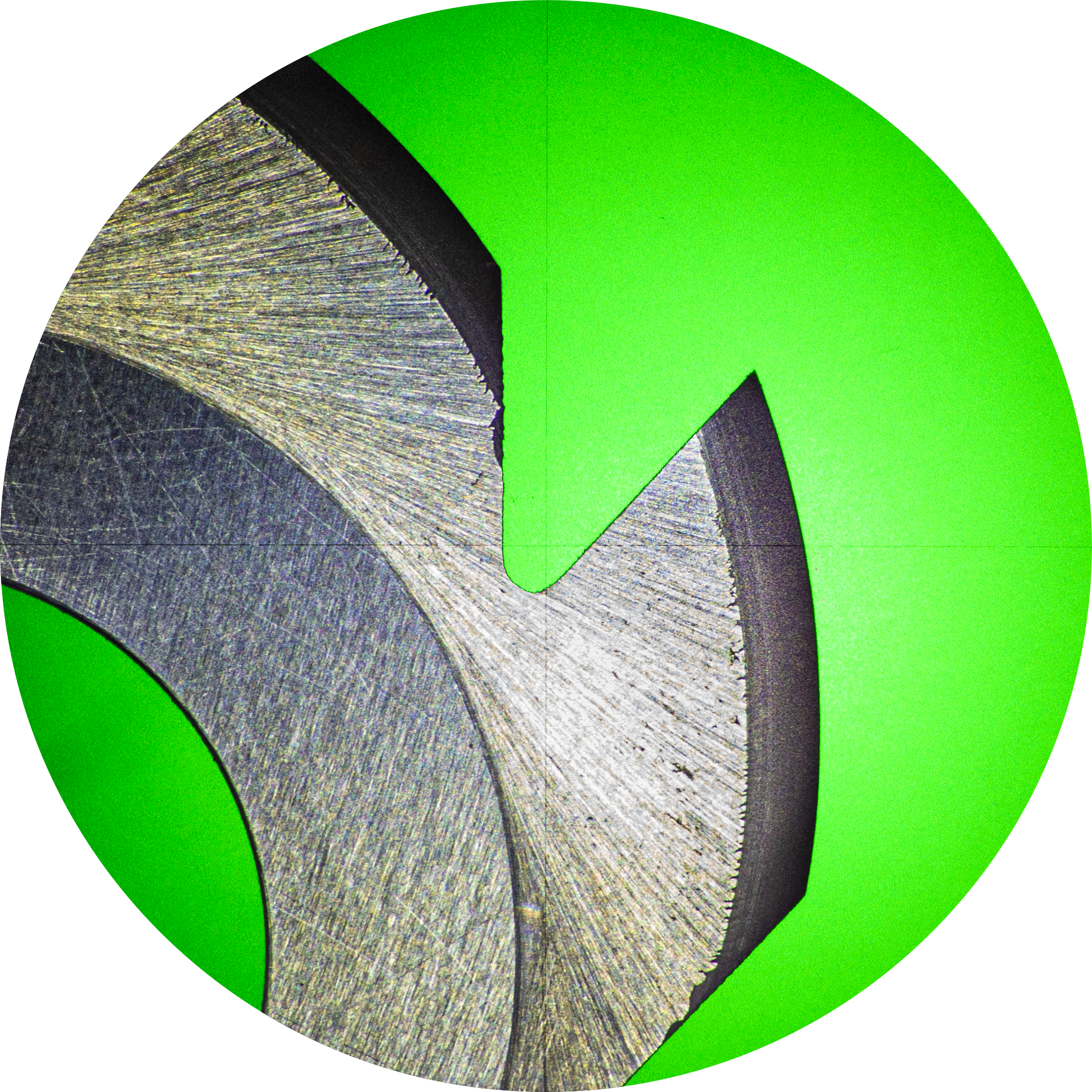
Optical comparators, also known as profile projectors, are rugged shop floor measurement machines that project silhouettes of manufactured parts onto a large upright glass viewing screen. Users measure dimensions and geometry of the image on the screen with chart gauge tools or manufacturer specification overlays mounted to the screen.
Most comparators are used on machine shop or manufacturing production floors. They can also be used in quality assurance labs. Users may inspect every part being manufactured, or they may take samples from manufacturing runs.
Comparators are widely used in industries including aerospace engineering, automotive, electronics, energy, medical, plastics, and telecommunications. Comparators are essential in research applications, production quality, and in design and performance specification analysis.
How Do Optical Comparators Work?
Comparators capture, magnify, and project part images through an internal system of lenses, lighting, and mirrors. To use a comparator, a user simply places a part on the platform stage on the front of the machine. A magnified backlit image of the part instantly appears at eye level.
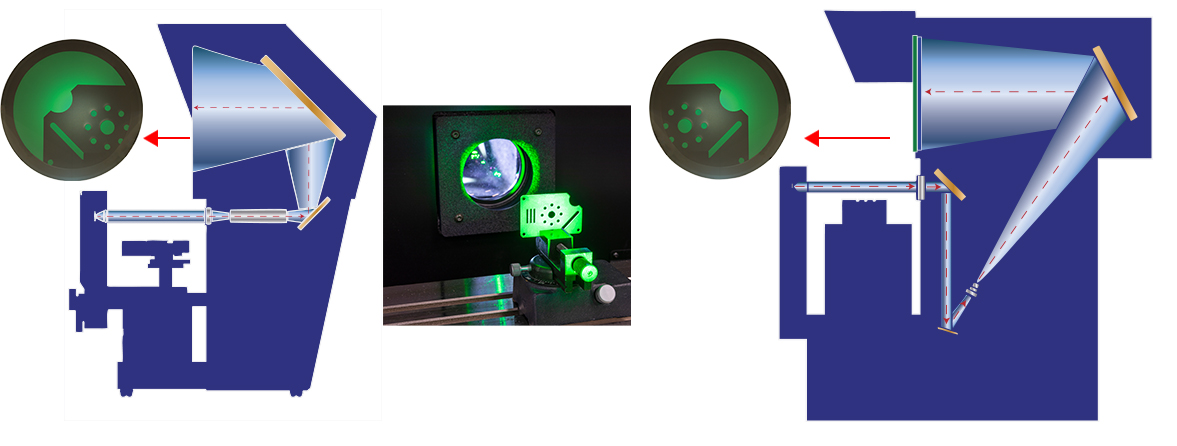
Internal diagrams showing typical projection paths in optical comparators.
The most common way of using a comparator is with a chart gauge or mylar overlay with a master image of the part being measured. The overlay is mounted to the front of the comparator screen allowing for easy comparison of the part’s actual form to the master image. When the edges of the part are lined up with the overlay on the screen, simple measurements may be taken for distances to other points.
Because it is the image and not the part itself that is measured, the quality of the imaging optics and lighting determine the capability of the machine.
How Can Automation Enhance Comparators?
While the most basic uses of comparators and overlay charts rely on human vision, a few automation tools can make operations more accurate.
First, some comparators are manufactured with an electronic overlay chart package consisting of software and internal hardware that projects a virtual chart gauge of the part’s CAD model onto the screen. This eliminates the need for mylar overlays, which can be expensive to create, maintain, and store. An electronic overlay chart can also accommodate larger parts by “coupling” the chart to the image so that the chart moves with the part as the stage is moved.
Another convenient tool is automatic edge detection. The fundamental comparator technique is to mark the position of the stage when a part’s edge is aligned to the screen centerline. An automatic edge sensor can determine when an edge crosses the centerline more accurately and with better repeatability than the human eye.
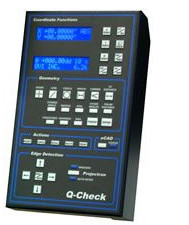 Edge detection tools require the use of Digital Readouts (DROs) which are axis orientation tools that monitor and display the X and Y axis stage positions. The readout can be zeroed at any point for convenient length measurements in a single axis.
Edge detection tools require the use of Digital Readouts (DROs) which are axis orientation tools that monitor and display the X and Y axis stage positions. The readout can be zeroed at any point for convenient length measurements in a single axis.
Additional digital capabilities and software packages can be added to comparators to increase the speed of operation, reliability, and accuracy. But the most automated comparator-type systems are Video Contour Projectors.
What are Video Contour Projectors?
Video Contour Projectors have the external form factor of traditional comparators, but replace the internal lens assemblies with large field-of-view (LFOV) video measurement optics. Like a conventional comparator, the video contour projector forms a precisely magnified image of the part. But instead of projecting the image on a glass analog screen, the image is captured and digitized by a high-resolution metrology camera and displayed on a large flat screen display. In addition to the video optics providing greater magnification of the part, once the image has been digitized, many possibilities open for high-accuracy automatic measurement. Users can now create and run measurement routines, perform “walk-up and measure” tasks, and fit measurement data to 2D CAD for profile and GD&T analysis.
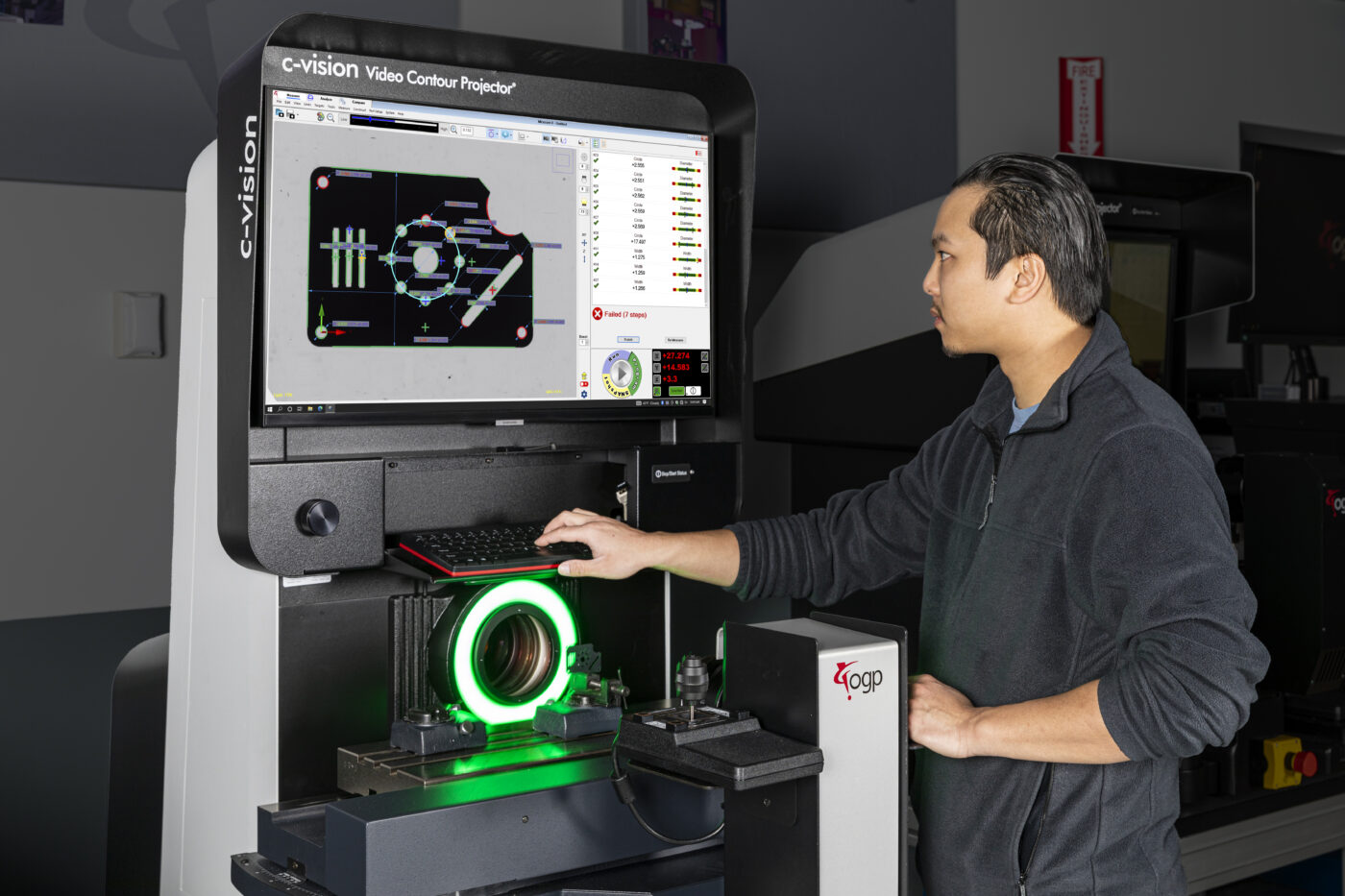
A Metrologist using a floor model OGP c-vision Video Contour Projector. Notice the digitalized part image on the screen showing fit measurement data.
4 Questions to Ask When Buying an Optical Comparator
1.) How am I going to use it?
Before investing in any metrology system, it is crucial to determine your expectations and what you really want. Are you looking for a machine that can handle any manufacturing challenge? How heavy are the parts you’re measuring? Will you use it on the shop floor or in a metrology lab environment? And what will be your frequency of using the machine?
2.) What Quality Am I Expecting?
What are your expectations of the quality of the equipment you’re going to buy? Here are some key considerations for any comparator purchase:
Quality of Image
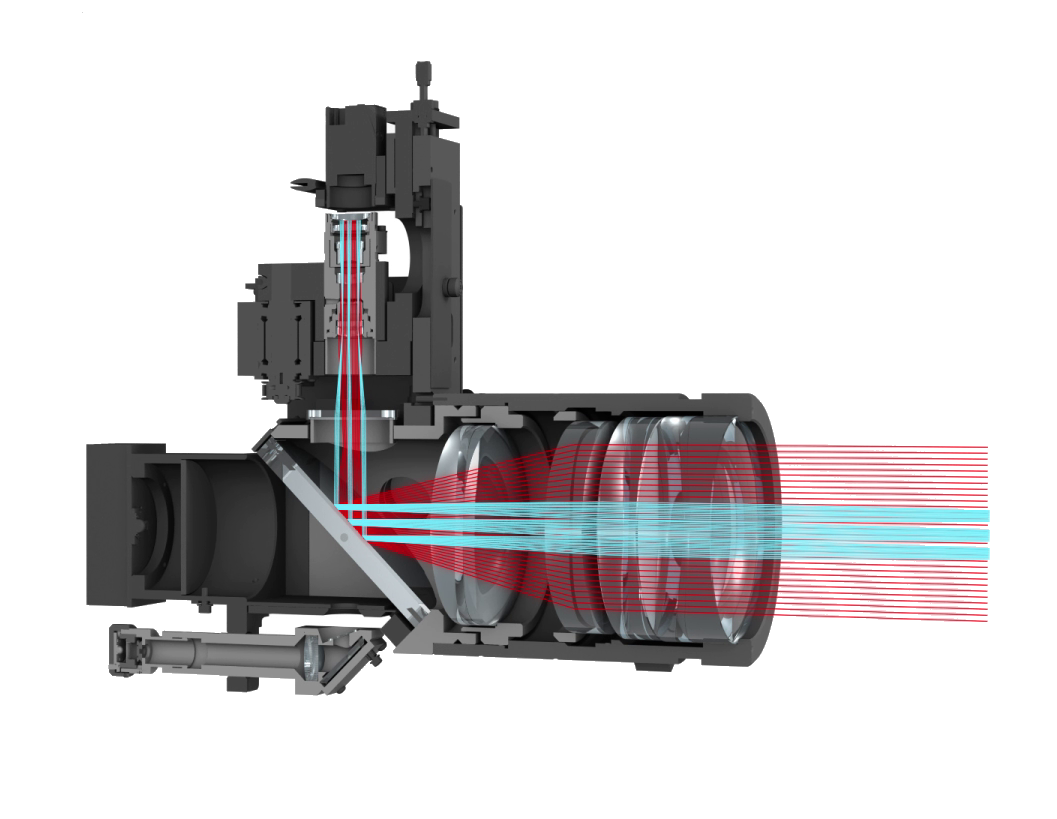 Optics in the best comparators provide image quality and depth-of-field that is consistent across the field-of-view so that the entire screen image is clear, bright, and sharply focused. The quality of the glass, the processes of grinding, lapping and polishing, centering, and coating must all be done with the utmost care to deliver accurate measurements.
Optics in the best comparators provide image quality and depth-of-field that is consistent across the field-of-view so that the entire screen image is clear, bright, and sharply focused. The quality of the glass, the processes of grinding, lapping and polishing, centering, and coating must all be done with the utmost care to deliver accurate measurements.
Low-distortion telecentric optics that produce accurate size measurements – even when not perfectly focused – are an important feature not all comparators offer.
In addition, constant working distance for all magnification lenses is another key feature of high-quality comparator optics. With a constant working distance, it is never necessary to re-stage a part or fixture to adjust to an alternate magnification.
Quality of Platform Construction
The very best optics will not perform well in a shop floor environment if they are installed on an unstable platform. Environmental effects can undermine the accuracy of even the best optical systems if they are not protected by a rugged shop floor-ready housing.
High-quality optical comparators typically consist of granite and steel bases, with optical mounts machined from stabilized cast iron. Tight-fitting sheet metal enclosures minimize infiltration of dust and oil mist that can degrade the performance of the optics. Properly integrated, these materials are thermally stable and isolate vibration that can cause distortion and non-repeatability in the optical image.
Quality of Lighting
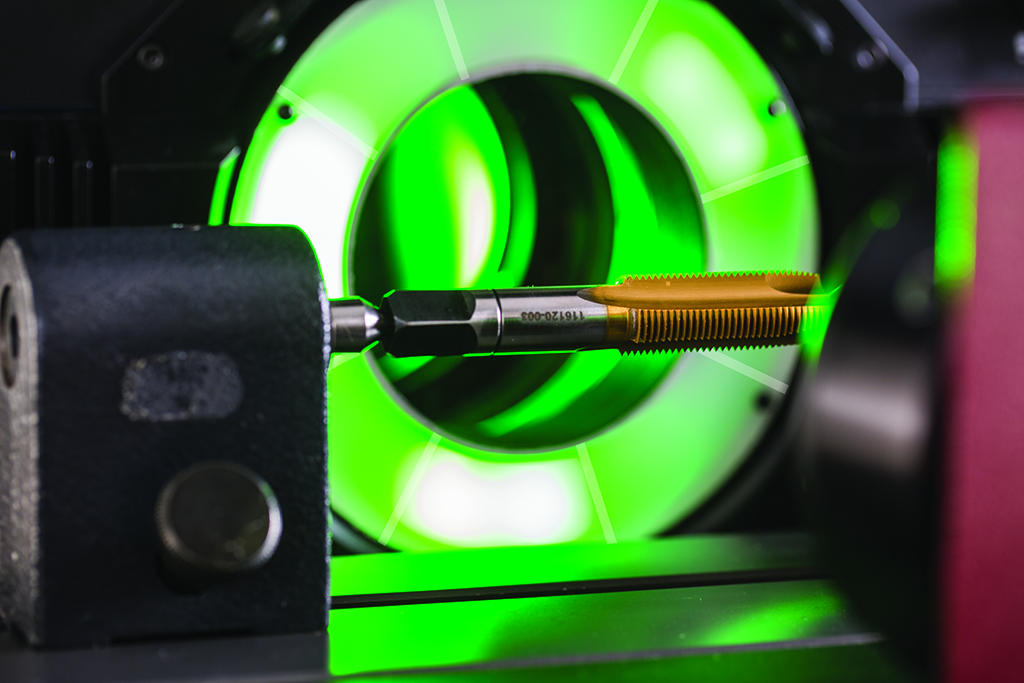 While comparators traditionally use Tungsten-Halogen and mercury-arc sources for illumination, LED lighting systems are also available. LEDs are compact, cool operating, and virtually never need replacement. They are extremely stable, emitting consistent intensity over their lifetime. LEDs are easily controlled and offer continuously variable intensity. Most importantly, LED lighting is very bright – enough to fully illuminate a 20” comparator screen when using high-magnification lenses.
While comparators traditionally use Tungsten-Halogen and mercury-arc sources for illumination, LED lighting systems are also available. LEDs are compact, cool operating, and virtually never need replacement. They are extremely stable, emitting consistent intensity over their lifetime. LEDs are easily controlled and offer continuously variable intensity. Most importantly, LED lighting is very bright – enough to fully illuminate a 20” comparator screen when using high-magnification lenses.
LED light sources also improve the accuracy of measurements made using automatic edge detectors. Since there is no flicker from the filament or vapor, and the intensity is digitally controlled, the repeatability of edge measurement is greatly improved.
LEDs also allow more versatile designs in the light sources – especially the design of oblique surface or ring lights, in which the direction of the light can be controlled to highlight edges that are angled with respect to a surface. Oblique lighting makes it easier to see and measure small chamfers or beveled edges that would not focus sharply with square-on surface light alone.
3.) How Much Automation Do I Need?
Have you determined what type of automation tools you want for this machine? Will you be using standard mylar overlay charts? Or would you prefer to use electronic overlays taken from CAD models? Will you require automatic edge detection using a DRO? Or are you hoping to run automated measurement routines and capture GD&T analysis using a digital video contour projector?
4.) How Much Am I Willing to Spend?
With many options on the market, it is important to determine how much you will spend. In addition to the equipment, you should anticipate maintenance expenses over its lifetime.
When doing so, consider the potential return on your investment. For instance, if you are currently experiencing human error in your measurement processes, how many more part defects could you capture with machine vision? How much could you save in labor by automating inspection routines? And how much more productive could your operators be when using faster, more accurate tools?
Finally, consider the reputation of your business. Are you at risk of losing customers because of defects or the inability to produce conclusive reporting? To what degree could your quality systems become a competitive advantage?
OGP Optical Comparators - Three Great Options
OGP Optical Comparators combine cutting-edge optics, lighting, and automation technologies for enhanced productivity and profitability. The benchtop and floor model offerings are the industry’s best value and performance solutions for non-contact shop floor measurement.
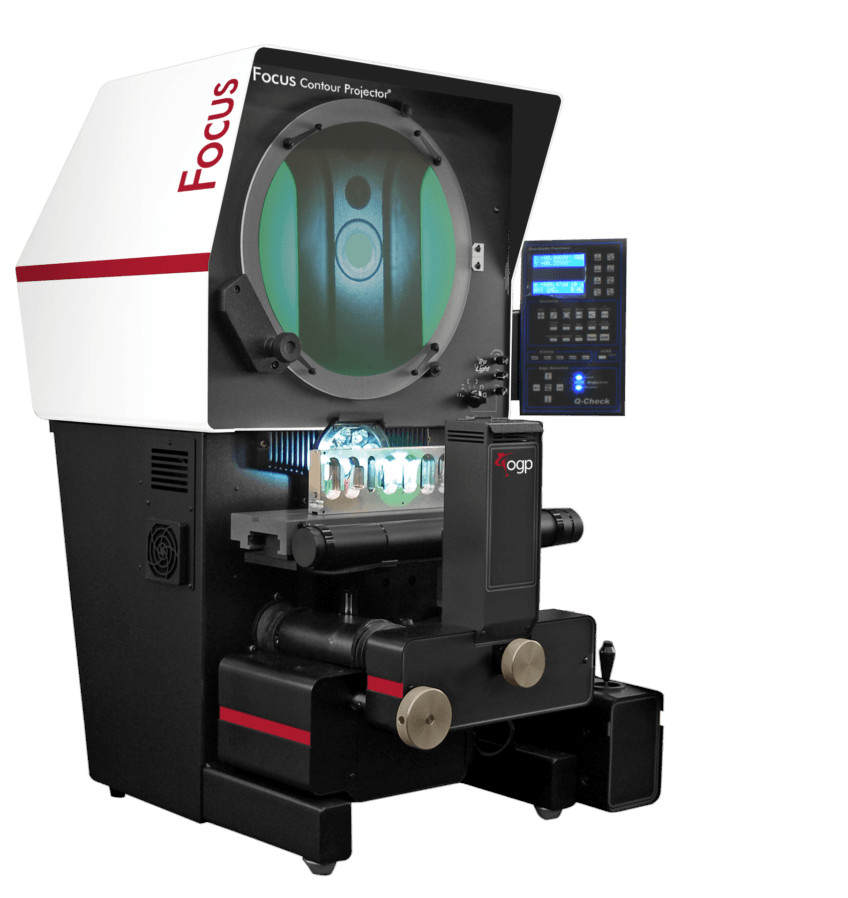
Focus Contour Projectors®
Benchtop optical comparators featuring high quality, full-function 16” diameter glass screen and 14” viewing area with TruLight® LED lighting illumination, telecentric upright and reversed optics, a standard 3-position internal lens turret, rigid all steel construction, and solid metal castings. For automation, the optional VidiProbe™ package transforms Focus into a fully automatic video inspection system using Measure-X® Software. Projectron™ edge detection is also available to locate optimal edges automatically with high repeatability.
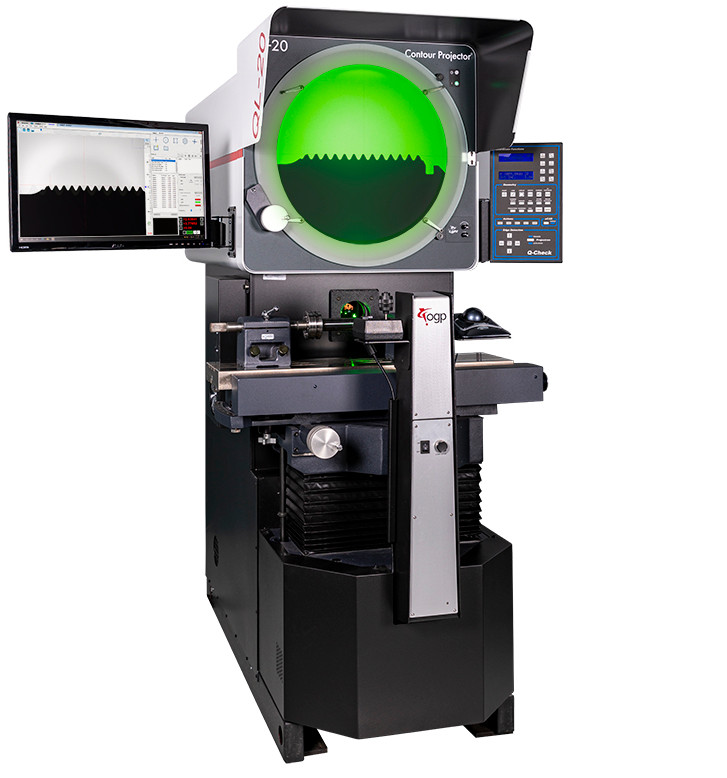
QL-20™ Contour Projector®
An upright comparator with high load capacity, cast iron, nickel-plated worktable for accommodating large, heavy machined parts and fixtures. QL-20 features an eye-level 24” diameter glass screen with a 20” viewing area and a conveniently located DRO. A fixed 1-position lens turret is standard, with an optional motorized 5-position turret. Telecentric upright and un-reversed optics are standard. TruLight LED lighting illumination allows adjustable variable intensity light control. Optional VidiProbe video measurement is available, as well as eCAD®, an electronic overlay chart package that allows a CAD model to be used to project a profile tolerance band onto the comparator’s screen.
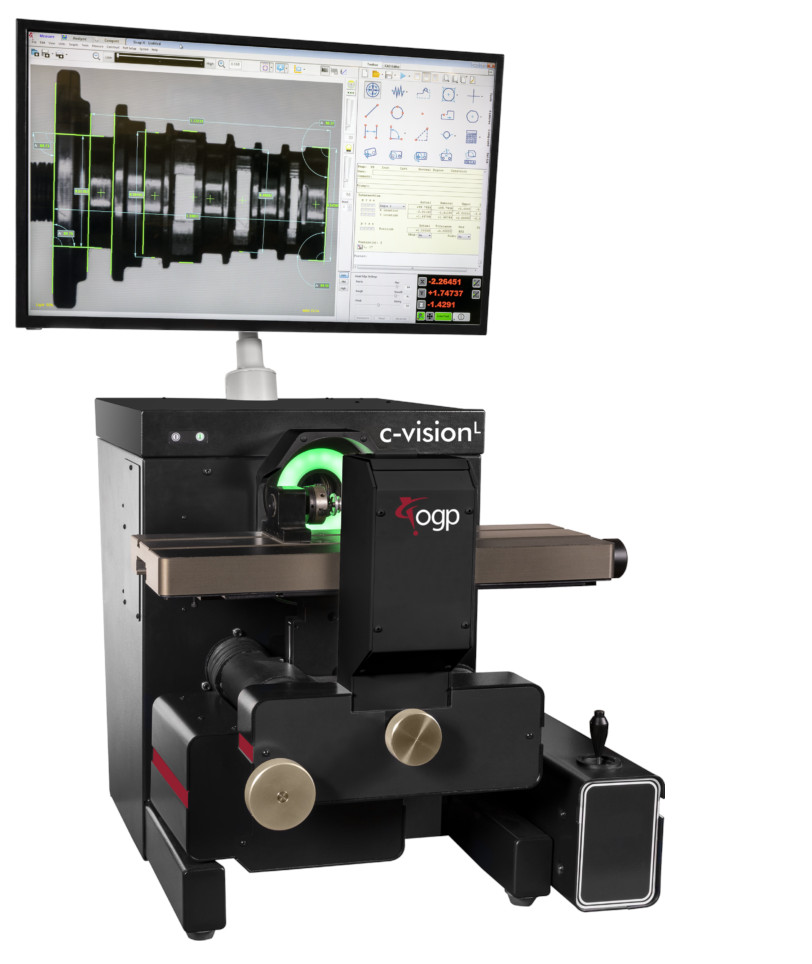
c-vision™ Video Contour Projectors®
These digital systems combine the speed and accuracy of a video measurement system with the rugged capacity of a traditional optical comparator. The telecentric LFOV video measurement optics offer a high-resolution digital image with exceptionally low distortion and 60% more magnification range than a standard comparator. Users can accurately measure features up to four inches without moving the worktable, while still measuring fine details on parts. c-vision benchtop and floor models come standard with Measure-X® software, which features a full set of image processing and autofocus tools, geometric functions, ANSI/ISO tolerances, easy editing, and contour analysis.
Closing Thoughts
Optical Comparators remain one of the most cost-effective and popular tools for two-dimensional inspection and measurement in manufacturing facilities worldwide. These machines are easy to use and can be ordered with automation tools to gain better accuracy than the human eye can detect.
OGP is proud to offer a complete line of optical comparators with the world’s most advanced measurement technologies. From reliable manual profile projectors to fully automatic CNC-controlled vision comparators and video contour projectors, OGP has the right measurement solution to support your manufacturing needs. Our worldwide network of authorized OGP representatives offers expert support and service for OGP comparators anywhere in the world. Contact us for more information.


